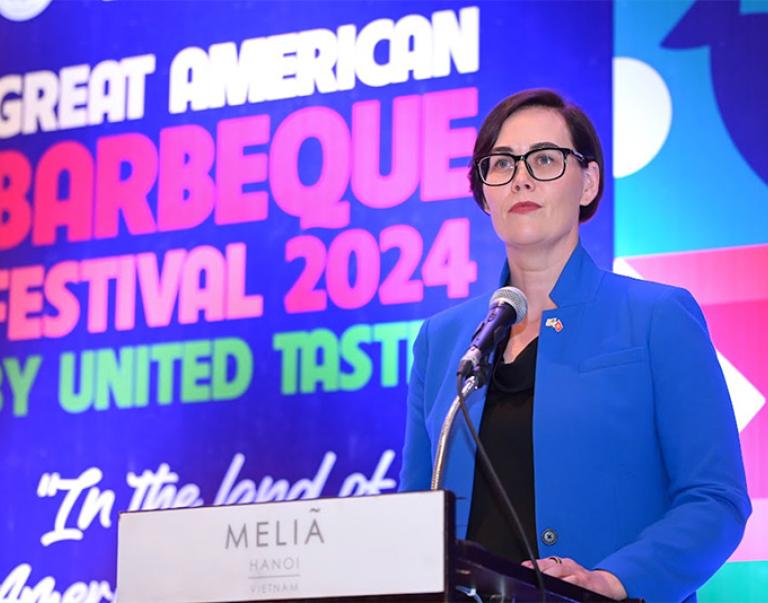Key Terminology

USDA has a glossary that defines its commonly used acronyms.
| Acronym | Meaning | Definition |
| Specialty Crop | Section 101 of the Specialty Crops Competitiveness Act of 2004 (7 U.S.C. 1621 note), amended under section 10010 of the Agricultural Act of 2014, Public Law 113-79 (the Farm Bill), defines specialty crops as, “Fruits and vegetables, tree nuts, dried fruits, horticulture, and nursery crops (including floriculture)." Eligible plants must be cultivated or managed and used by people for food, medicinal purposes, and/or aesthetic gratification to be considered specialty crops. Processed products shall consist of greater than 50% of the specialty crop by weight, exclusive of added water. | |
| Receipt for Service | To help ensure that all existing and potential USDA customers are being properly served in local offices, federal law and USDA regulations require that a Receipt for Service be provided to any current or prospective agricultural producer or landowner who requests, in person or in writing, a benefit or service from the Farm Service Agency (FSA), the Natural Resources Conservation Service (NRCS), and Rural Development (RD). With the barriers to in-person visits created by COVID-19, some USDA agencies have temporarily extended Receipt for Service to telephone requests as well. | |
| Historically Underserved Farmers and Ranchers | Some groups of people are identified in Farm Bill legislation and in USDA policy as being Historically Underserved (HU). Members of these groups have been historically underserved by, or subject to discrimination in, Federal policies and programs. Four groups are defined by USDA as “Historically Underserved,” including farmers or ranchers who are: Beginning; Socially Disadvantaged; Veterans; and Limited Resource. | |
| Limited Resource Farmer or Rancher | The term “Limited Resource Farmer or Rancher” means a participant: With direct or indirect gross farm sales not more than the current indexed value in each of the previous two years, and Who has a total household income at or below the national poverty level for a family of four, or less than 50 percent of county median household income in each of the previous two years. A Self-Determination Tool is available to the public and may be completed on-line or printed and completed hardcopy at: lrftool.sc.egov.usda.gov. | |
| Beginning Farmer or Rancher | The term “Beginning Farmer or Rancher” means a participant who: Will materially and substantially participate in the operation of the farm or ranch in the case of a contract with an individual, individually or with the immediate family, material and substantial participation requires that the individual provide substantial day-to-day labor and management of the farm or ranch, consistent with the practices in the county or State where the farm is located. In the case of a contract made with a legal entity, all members must meet these requirements. | |
| Socially Disadvantaged Farmer or Rancher | The term “Socially Disadvantaged” means an Individual or entity who is a member of a socially disadvantaged group. A socially disadvantaged group is a group whose members have been subject to racial or ethnic prejudice because of their identity as members of a group without regard to their individual qualities. Socially disadvantaged groups consist of the following: American Indians or Alaskan Natives Asians Blacks or African Americans Native Hawaiians or other Pacific Islanders Hispanics. For an entity, at least 50 percent ownership in the farm business must be held by socially disadvantaged individuals. Note: Gender alone is not a covered group for the purposes of NRCS conservation program authorities. The term entities reflect a broad interpretation to include partnerships, couples, legal entities, etc. | |
| Veteran Farmer or Rancher | The term "Veteran Farmer or Rancher" means a producer who: Served in the United States Army, Navy, Marine Corps, Air Force, or Coast Guard, including the reserve component thereof; was released from service under conditions other than dishonorable; and: Has not operated a farm or ranch, or has operated a farm or ranch for not more than 10 years; or Who first obtained status as a veteran during the most recent 10-year period. A legal entity or joint operation can be a Veteran Farmer or Rancher only if all individual members independently qualify. | |
| Colonias | Colonias are neighborhoods or communities within 150 miles of the U.S./Mexico border that are economically distressed. For many the basic infrastructure that most Americans take for granted is non-existent. Such was the case on the Tohono O’odham Nation in southern Arizona. Most of the homesites on this sprawling reservation are miles from the nearest water/waste water infrastructure. Homes were built years ago without indoor plumbing and the hope of adding sanitary facilities was stymied by the lack of access to treatment facilities. | |
| HSI's | Hispanic Serving Institutions | Hispanic Serving Institutions (HSIs) are public colleges and universities that have enrollment of undergraduate full-time equivalent students that are at least 25 percent Hispanic students. Currently, more than 500 HSIs nationally, serving more than 2 million students. |
| HSI Education Grants Program | Hispanic-Serving Institutions Education Grants Program | The Hispanic-Serving Institutions Education Grants Program seeks to: (a) strengthen institutional educational capacities to develop and enhance curriculum, faculty, instruction delivery systems, and infrastructure including libraries and scientific instrumentation, in order to respond and serve the needs of underrepresented students in identified State, regional, national, or international educational needs in the food and agricultural sciences; (b) recruit, retain, and support undergraduate and graduate students from underrepresented groups in order to prepare them for careers related to the food, agricultural, and natural resource systems of the United States; (c) facilitate cooperative initiatives between two or more Hispanic-Serving Institutions or between Hispanic-Serving Institutions and public or the private sector, in order to maximize the development and use of resources and to improve the food and agricultural sciences teaching programs. |
| OTR | Office of Tribal Relations | The Office of Tribal Relations (OTR) serves as a single point of contact for Tribal issues and works to ensure that relevant programs and policies are efficient, easy to understand, accessible, and developed in consultation with the American Indians and Alaska Native constituents they impact. |
| LMIC | Let's Move! In Indian Country | The Let's Move! in Indian Country initiative seeks to support and advance the work that Tribal leaders and community members are already doing to improve the health of Native American children. As a part of First Lady Michelle Obama's Let's Move! initiative, LMIC brings together federal agencies, communities, nonprofits, corporate partners, and tribes to mitigate childhood obesity in Indian Country within a generation. |
| FDPIR | Food Distribution Program on Indian Reservations | The Food Distribution Program on Indian Reservations (FDPIR) provides USDA Foods to income-eligible households living on Indian reservations, and to American Indian households residing in approved areas near reservations or in Oklahoma. Many households participate in FDPIR as an alternative to the Supplemental Nutrition Assistance Program (SNAP) because they do not have easy access to SNAP offices or authorized food stores. The Food and Nutrition Service (FNS), an agency of the U.S. Department of Agriculture, administers FDPIR at the federal level. The program is administered locally by either Indian Tribal Organizations (ITOs) or an agency of a state government. Currently, there are approximately 276 tribes receiving benefits under FDPIR through 102 ITOs and 3 state agencies. |
| AI/AN | American Indian / Alaska Native Program | The AI/AN Program aids the Department in attaining a diverse, qualified workforce to fulfill the goals outlined in Executive Order 13583, Establishing a Coordinated Government-wide Initiative to Promote Diversity and Inclusion in the Federal Workforce and Executive Order 11478, Equal Employment Opportunity in the Federal Government. |
| ANNH | Alaska Native-Serving and Native Hawaiian-Serving Institutions Education Competitive Grants Program | This program promotes and strengthens the ability of Alaska Native-Serving Institutions and Native Hawaiian-Serving Institutions to carry out education, applied research, and related community development programs. |
| land-grant institutions (1862 and 1890) | The Morrill Act of 1862 created land-grant institutions so that working class citizens could have equal access to higher education with a focus on farming and mechanical skills. Subsequently the Morrill Act of 1890 established the 1890 and 1994 land-grant institutions to address educational inequality among African Americans and Native Americans. | |
| 1890 land-grant institutions | The 1890 land-grant institutions are historically black universities that were established under the Second Morrill Act of 1890. NIFA's 1890 land-grant institutions programs are intended to strengthen research, extension and teaching in the food and agricultural sciences by building the institutional capacities of the 1890 Institutions. | |
| 1994 Land Grant Colleges | There are 36 federally recognized tribal colleges and universities (also known as “1994s”), designated as land-grant institutions through the Equity in Educational Land-Grant Status Act of 1994. For reservation communities, these 1994 land-grant institutions help improve the lives and career opportunities for Native students and the communities at large. 1994 institutions support research, education, and extension programs that enhance local agriculture and food production. |



